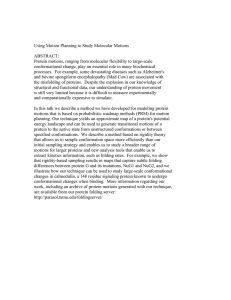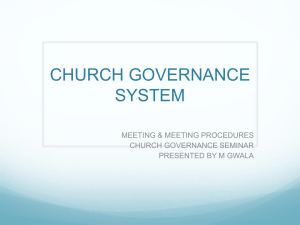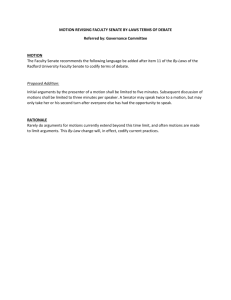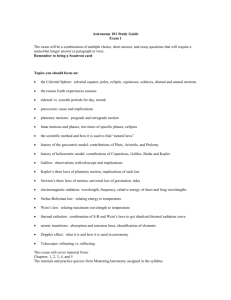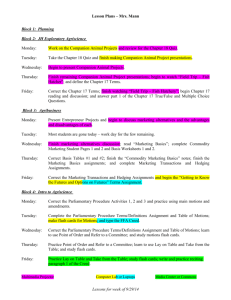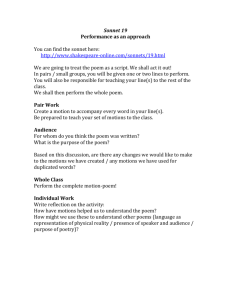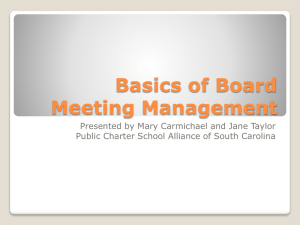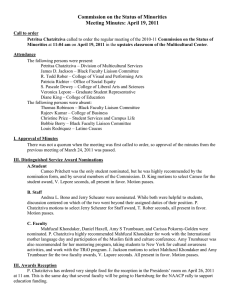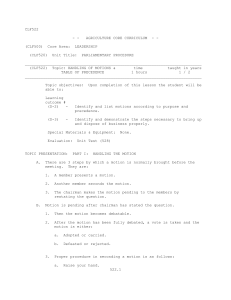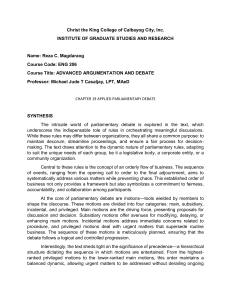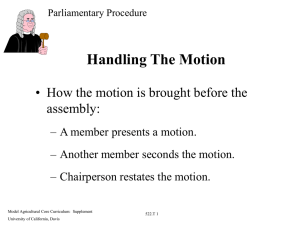Chabot College September 1994 – Student Leadership
advertisement
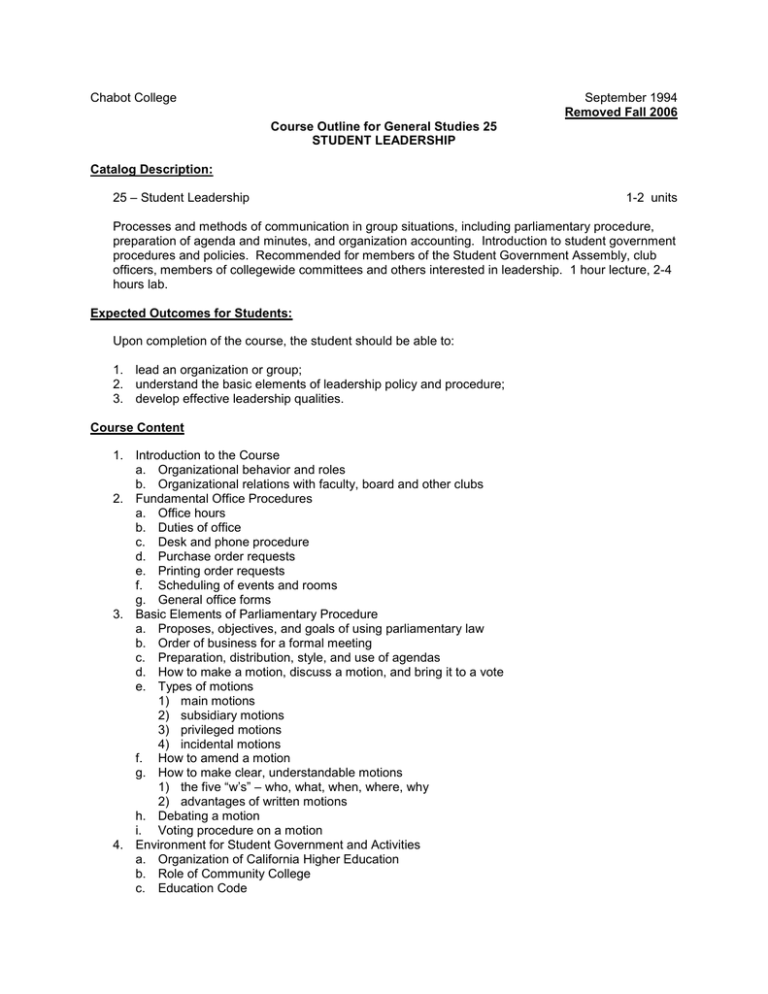
Chabot College September 1994 Removed Fall 2006 Course Outline for General Studies 25 STUDENT LEADERSHIP Catalog Description: 25 – Student Leadership 1-2 units Processes and methods of communication in group situations, including parliamentary procedure, preparation of agenda and minutes, and organization accounting. Introduction to student government procedures and policies. Recommended for members of the Student Government Assembly, club officers, members of collegewide committees and others interested in leadership. 1 hour lecture, 2-4 hours lab. Expected Outcomes for Students: Upon completion of the course, the student should be able to: 1. lead an organization or group; 2. understand the basic elements of leadership policy and procedure; 3. develop effective leadership qualities. Course Content 1. Introduction to the Course a. Organizational behavior and roles b. Organizational relations with faculty, board and other clubs 2. Fundamental Office Procedures a. Office hours b. Duties of office c. Desk and phone procedure d. Purchase order requests e. Printing order requests f. Scheduling of events and rooms g. General office forms 3. Basic Elements of Parliamentary Procedure a. Proposes, objectives, and goals of using parliamentary law b. Order of business for a formal meeting c. Preparation, distribution, style, and use of agendas d. How to make a motion, discuss a motion, and bring it to a vote e. Types of motions 1) main motions 2) subsidiary motions 3) privileged motions 4) incidental motions f. How to amend a motion g. How to make clear, understandable motions 1) the five “w’s” – who, what, when, where, why 2) advantages of written motions h. Debating a motion i. Voting procedure on a motion 4. Environment for Student Government and Activities a. Organization of California Higher Education b. Role of Community College c. Education Code Chabot College Course Outline for General Studies 25, Page 2 September 1994 ] d. Title V e. Board and Administrative Policy f. Student Government Constitution 5. Group Dynamics (Developing Effective Leadership) a. Making the Student Affairs Council an effective organization 1) basic values should guide student officers 2) academic responsibility of a student leader 3) moral responsibility of a student leader b. Committee Chair 1) requirements 2) responsibilities 3) rights c. Effective committee meetings 1) what makes for a good committee meeting? 2) the committee chair—duties, responsibilities, rights, etc. 3) authority and responsibility of a committee 4) preparation of committee reports d. Communication 1) communication between the Student Affairs Council and the general student body 2) Communication and coordination among the council members 3) Publicity of events sponsored by the Student Affairs Council Methods of Presentation: 1. Lecture/discussion Methods of Evaluating Student Progress: 1. Papers/reports 2. Classroom participation 3. Final examination/term projects. Textbook(s) (Typical): No textbook required Special Student Materials: 1. 2. 3. 4. ASCC Constitution, By-Laws and Procedures Codes ASCC Budget Robert’s Rules of Order Appropriate ed. code sections
